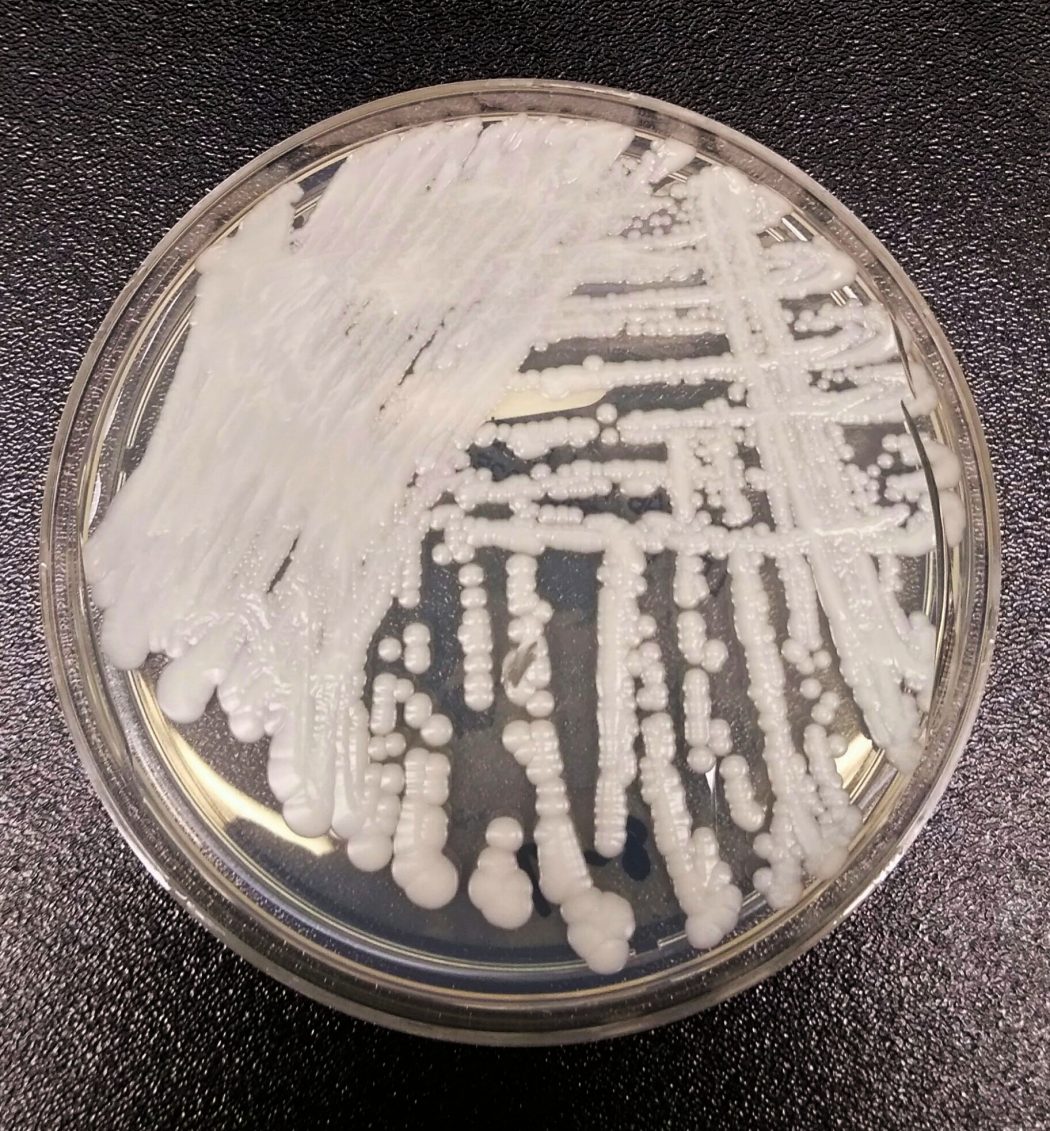Candidiasis, a fungal infection of the genus Candida, affects millions of people annually. It generally is not a serious infection. However, if a Candida species gains access to the bloodstream and forms colonies systemically, a dangerous condition known as candidemia can arise. Candidemia is a condition that primarily affects the immunocompromised populations. Blood cultures are imperative once the clinical suspicion of candidiasis arises, since only a small percentage of patients will develop symptoms such as muscle abscesses or eye lesions characteristic of candidemia [1]. Antifungal medications need to be started promptly in candidemia cases to prevent multisystem organ failure. There are plenty of Candida species going around, but the recent discovery of Candida auris was the focus of a recent New York Times article series, and for good reason.
Laboratories in Japan first identified C. auris in 2009, naming this new Candida species after its area of discovery: the ear canal [2]. Notoriously difficult to identify, C auris has fooled advanced molecular identification technology such as MALDI-TOF mass spectrometry due to its resemblance to other Candida species [3]. The recent development of PCR assays specific for this species will likely be the best way for labs to identify cases. In the body, C. auris exists primarily as oval yeast cells that lack hyphal or pseudohyphal forms. Virulence varies in isolated samples based on whether they exhibit phospholipase A or proteinase activity. Most significantly, the fungus has the potential to form biofilms. Thick layers of extracellular polymeric substances can form a powerful physical barrier that protects aggregated Candida cells from antimicrobial substances [4].
Unfortunately, antimicrobial resistance from biofilm formation is often the least of a hospitalist’s worries in treating C. auris. When the fungus was first described in 2009, four distinct clades were immediately identified, all displaying the potential for multi-drug resistance (MDR) [2]. This emergence of a new Candida species with MDR is what inspired the sensational headlines in the NYT. Most organisms have been documented in healthcare settings long before MDR strains have emerged. This skipping of steps straight to MDR was what alarmed microbiologists. Candida species are generally susceptible to Amphotericin B, azoles, and echinocandins, but some C. auris infections have demonstrated resistance to all three. In fact, 90% of C. auris isolates are resistant to at least one drug [5]. Azoles have proven to be the least effective against this species, with Amphotericin B performing slightly better. Currently echinocandins such as caspofungin are the best monotherapy for C. auris [6]. Taking precautions such as using directly observed therapy can reduce the likelihood of MDR development, but some cases will still display resistance. More research is required to determine anti-fungal medication combinations that are effective against such C. auris infections.
Hospitals must take special precautions with C. auris, since it can live on surfaces for weeks. Candidemia can easily occur in the hospital setting in indwelling central lines or catheters. Although C. auris is no more resistant to commonly used quaternary ammonium disinfectants than other Candida species, it has a reputation for evading hospital disinfection [7]. Because of these concerns, confirmed cases of C. auris should be isolated. Anecdotes from American hospitals describe the fungus as infecting entire rooms, necessitating the replacement or sterilization of everything from sink faucets to ceiling tiles [5].
The authors of the NYT article take issue with the apparent unwillingness of hospitals and public health officials to spread information on C. auris. But really, what can be done? Hospitals understand the value and importance of infection control. C. auris is strongly associated with hospitalization and has a predilection for immunocompromised patients, sparing the vast majority of immunocompetent patients. Mortality rates from candidemia cases with C. auris are quoted at 29%, but this is below the mean mortality for candidemia from other species such as C. albicans [8]. Even so, the immunocompromised population is simply at a higher risk of morbidity and mortality in the first place. While this newly identified fungus is a dangerous infection with cases popping up around the world, our primary takeaway should really be the rapid rate at which MDR organisms are developing. The presence of resistance in a microorganism at its time of discovery strongly suggests exposure to antimicrobials prior to human infection. Irresponsible disposal and usage of antimicrobials are likely to blame, and C. auris is a wake-up call that should not be ignored.
- Kaufmann CA, Marr KA, Thorner AR. Clinical manifestations and diagnosis of candidemia and invasive candidiasis in adults. UpToDate. Updated 2018 Aug 27. Accessed 2019 Apr 30 from https://www.uptodate.com/contents/clinical-manifestations-and-diagnosis-of-candidemia-and-invasive-candidiasis-in-adults.
- Sears D, Schwartz BS. Candida auris: An emerging multidrug-resistant pathogen. Int J Infect Dis. 2017;63:95-98. doi:10.1016/j.ijid.2017.08.017.
- Jeffery-Smith A, Taori SK, Schelenz S, et al. Candida auris: a Review of the Literature. Clin Microbiol Rev. 2017;31(1):e00029-17. Published 2017 Nov 15. doi:10.1128/CMR.00029-17.
- Cavalheiro M, Teixeira MC. Candida Biofilms: Threats, Challenges, and Promising Strategies. Front Med (Lausanne). 2018;5:28. Published 2018 Feb 13. doi:10.3389/fmed.2018.00028.
- Richtel M, Jacobs A. A Mysterious Infection, Spanning the Globe in a Climate of Secrecy. New York Times. Published 2019 Apr 6. Accessed 2019 Apr 30 from https://www.nytimes.com/2019/04/06/health/drug-resistant-candida-auris.html.
- Kaufmann CA, Marr KA, Thorner AR. Management of candidemia and invasive candidiasis in adults. UpToDate. Updated 2019 Apr 10. Accessed 2019 Apr 30 from https://www.uptodate.com/contents/management-of-candidemia-and-invasive-candidiasis-in-adults.
- Cadnum JL, Shaikh AA, Piedrahita CT, et al. Effectiveness of Disinfectants Against Candida auris and Other Candida Species. Infect Control Hosp Epidemiol. 2017;38(10):1240-1243. doi:10.1017/ice.2017.162.
- Adam R, Okinda N, Revathi G, et al. 378. Candida auris Fungemia: Risk Factors and Outcome. Open Forum Infect Dis. 2018;5(Suppl 1):S147. Published 2018 Nov 26. doi:10.1093/ofid/ofy210.389.
Luke Wohlford is a medical student in the University of Arizona College of Medicine - Phoenix, Class of 2022. He graduated from the University of Arizona in 2018 with a Bachelor of Science in physiology. Luke plans to go into emergency medicine has special interests in public health and EMS. He spends most of his free time hanging out with his dogs Kanye and Kelso or feeling guilty about not exercising.


